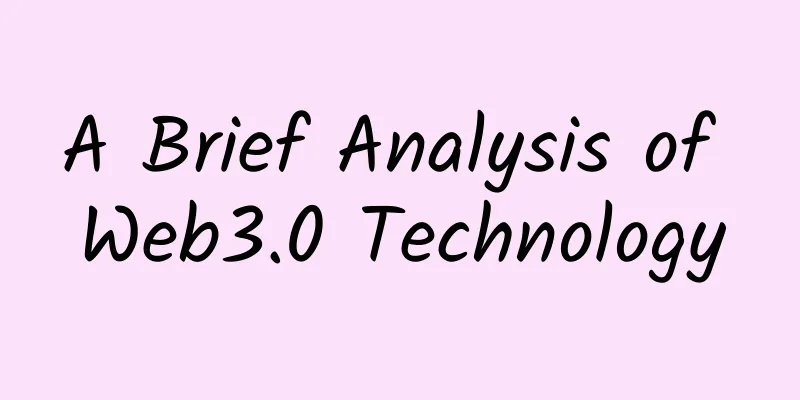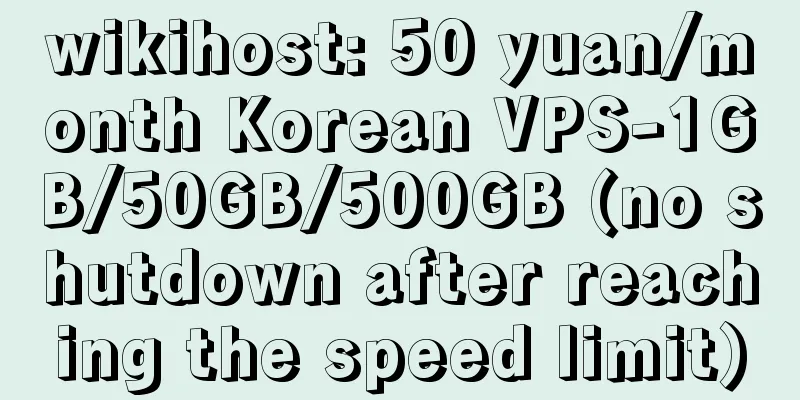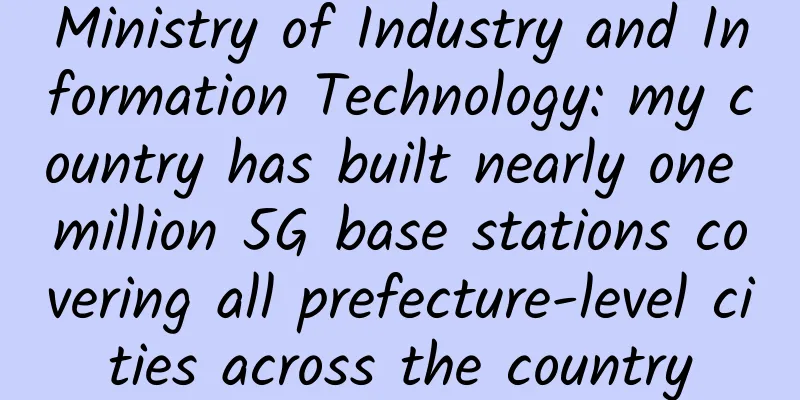In 2017, the industry cloud finally became a big thing. It is not as simple as cloud + industry!

|
A reporter once asked many industry customers a question: Which technology do you think is the most indispensable in the digital transformation of enterprises? Nine out of ten of them chose "cloud". But they often followed it with an adjective: a cloud customized according to the characteristics of our industry. From their answers, the reporter felt the important position of cloud in the transformation of industry customers, which is like "no wine, no feast, no chicken, no banquet", but they expressed more hope for a cloud that "deeply understands the characteristics and needs of the industry".
Last month, Huawei held the China Ecosystem Partner Conference 2017 in Changsha. The conference invited government leaders, experts, industry partners, and industry customers to discuss the development of industry cloud with the head of Huawei's industry cloud. There were many very interesting views, which the reporter believes are worth sharing for reference by more industry customers in transformation. Industry clouds that require “special treatment” Huang Tao, Party Secretary and Director of Changsha Municipal Economic and Information Commission, pointed out that the era of cloud computing has arrived. Business-driven cloud computing has become one of the core technologies for digital transformation. Industry cloud is a digital reconstruction driven by business, which has stimulated innovation and change in the industry. Huawei provides an open, elastic, flexible, and secure platform, and provides excellent industry cloud solutions to help various industries practice cloud computing. Zhou Hongren, executive deputy director of the National Information Technology Expert Advisory Committee, made a vivid analogy. If deploying industry cloud solutions is as simple as people taking goods off supermarket shelves, then such solutions are the most viable solutions. He believes that industry cloud solutions will definitely become an independent industry, because the connotations and characteristics of cloud computing processing capabilities in different industries are very different, and the processing requirements and operating system emphases of cloud computing are also different. Only industry cloud solutions can better meet the cloud computing needs of customers in different industries. Gao Xulei, General Manager of China Merchants Bank Data Center, has a special understanding of this. He said that financial cloud is very different from ordinary public cloud. It not only has very high requirements for availability and reliability, but also needs to meet very strict financial regulatory requirements. For the cloud of the financial industry, it is necessary to build a highly controllable and reliable financial cloud first. First of all, a highly reliable financial environment must be established, and a system that is highly compliant with regulatory audits must be established. Finally, the security of financial cloud data must be met, especially data transmission, application data storage and data destruction must be carefully controlled. If we consider it from the perspective of ICT manufacturers, we need to strengthen the construction of financial cloud service capability system, security system and infrastructure for the financial industry. "For the construction of financial cloud, ordinary computer rooms cannot be used. It must reach the level of T3+, and additional reinforcement must be done on network storage applications. These reinforcements are difficult to do on ordinary public clouds." Gao Xulei revealed. Cloud + Industry, Who Has the Final Say? Peng Ke, Chief Engineer of IT Solution Sales Department of Huawei Enterprise BG China, shared Huawei's insights into the changes in industry cloud. Peng Ke believes that industry cloud is definitely not a simple combination of cloud and industry. Take the automotive industry as an example. The cloud and the automotive industry will face many challenges in the process of integration, and there are many places where the cloud needs to be adapted to the industry. This is exactly the opposite of the implementation of cloud in the past decade. In the past, Internet companies represented by Google and Amazon emphasized the standardization of cloud, provided elastic shared resource pools through cloud computing, and took cloud as the leading force to incubate new traditional industries. However, the situation is different in the industry customer market. The business model of Internet companies is very different from that of industry customers: Internet companies do not have a large number of legacy businesses and systems, and generally provide services for free. This is not the case with industry customers. First, they need a more reliable, secure, and stable environment. Second, their systems and businesses are more complex, so it is not feasible to simply apply the experience of Internet cloudification to traditional industry customers. "Ten years ago, customers needed to adapt to the cloud, but now the cloud needs to adapt to the industry. This is the conclusion we have come to." How to smoothly access the industry cloud? The reporter learned that currently, enterprises will migrate about 20% of their applications to the cloud, but by 2025, enterprises will migrate 85% of their applications to the cloud. So which path will enterprises choose to achieve a more balanced transition? Peng Ke, Chief Engineer of Huawei's IT Product Solutions Department, shared Huawei's thoughts on four paths for industry customers to migrate to the cloud: The first is the interactive system. Huawei found that every time a Huawei mobile phone is released, there will be a rush to buy and make reservations. If the traditional method is used to build according to the peak, it will require a lot of investment and cannot meet the demand. Later, Huawei adopted a hybrid cloud architecture, put daily traffic on the private cloud, put the reservation module on the public cloud, and built a container system. Once the peak is reached, millions of servers can be started instantly, carrying 100,000 transactions per second. In fact, there is a similar demand in the government field. A large amount of access traffic may be generated at a certain time or event trigger. Huawei recommends unified management and deployment through a hybrid architecture, which later achieved very good results. The second is the insight system, which is currently a field where cloud computing and big data are developing rapidly. Enterprises and governments are building very rapidly in this area. In fact, its essence is that computer systems and IT systems must be able to evolve and learn by themselves, gradually moving from BI to AI. Huawei and its partners and customers develop different industry algorithms for different industry applications and provide customized services. The second is the development and testing system. Huawei is one of the largest hardware providers in China. If we count outsourcing parties and partners, there are more than 100,000 people working on software development around Huawei. How do these hundreds of thousands of employees collaborate on development? Huawei has built 1.3 million virtual machines to help with software development, testing and simulation by moving jobs to the cloud. In multiple data centers around the world, Huawei puts the development work of debugging and drawing in local R&D centers, and puts a large amount of simulation calculations that only require results in low-cost data centers. In this way, the entire iteration cycle of Huawei's tens of millions of code-level products has been shortened from 9 weeks to 3 weeks, reducing the development cycle by more than 60%, and greatly reducing the cost of development and testing. Not only that, Huawei also shares its development and testing experience and publishes it on the public cloud. ***, cloudification of production and technical systems is the most difficult step. Huawei uses Lufax's services to integrate cloud platforms into physical servers, making the use and provision of physical servers as easy and convenient as virtual machines. Industry cloud, the time to take action has come! The reporter found that Huawei's entire public cloud architecture and private cloud architecture are built through open architecture. The reason for this is that Huawei has always adhered to the principle of originating from open source, being higher than open source, and giving back to open source, and has increased investment in the open source community to keep its products open, which is very valuable to partners. It avoids locking in manufacturers, and partners will not be bound by Huawei based on system development. The entire development system is very open. The reporter learned that in 2017, Huawei will release a number of public cloud services. In addition to traditional networks, it will also provide new public cloud services in artificial intelligence, big data, and SAP for customers and partners to choose from. "The positioning of Huawei Cloud is very clear, with three key words: one is enterprise-level, hoping to create an enterprise-level solution that uses cloud to adapt to the industry; the second is differentiation, creating solutions that are well aware of industry needs; and the third is an open ecosystem, adopting a unified architecture of hybrid cloud." Peng Ke emphasized that Huawei hopes to incubate the industry's extensive experience and capabilities through cloud means and methods, and provide them to a large number of innovative companies in the form of services, thereby reducing the cost of financial innovation for society as a whole. At the end of the interview, the reporter thought that one of Director Zhou's views was very representative. He said that cloud computing, big data, and the Internet of Things have created a brand new environment. The development of cloud has also gone through several years of exploration before the concept of today's industry cloud solutions has gradually emerged. Now Huawei has realized the particularity between industries and has begun to try to productize its own technology, which means that the time has come for the development of industry cloud and there is a lot to look forward to in the future. |
>>: Communication baseband is closely related to mobile phone network speed and call quality
Recommend
Gartner predicts that global IT spending will reach $4 trillion in 2021
Gartner, the world's leading information tech...
The TRUST principle for 6G network performance experience
The International Seminar on Future Information a...
Second wave of 5G: 30 countries launch services by 2023
New network deployments and enterprise momentum a...
Come and have a look!!! TCP/IP knowledge points that you often overlook
Internet Layer Protocol In the DoD model, the Int...
Sending Messages - RocketMQ Knowledge System (II)
[[410032]] In the previous article, we got to kno...
Alibaba Cloud Golden Autumn Cloud Season, Cloud Server Flash Sale 2C2G5M Annual Payment Starting from 60 Yuan
Alibaba Cloud (aliyun) launched another Golden Au...
Top 10 Cyber Threats to Private 5G/LTE Networks
We all want devices to communicate with each othe...
Shanxi's first "government cloud" platform launched in Xinzhou
Recently, with the "Xinzhou Public Trading P...
Can the heavy fine on Alibaba serve as a wake-up call for the Internet giant?
The State Administration for Market Regulation ha...
Wi-Fi 6 deployment exceeds 5G, will Wi-Fi 6 become the next generation of wireless network?
In addition to popular devices such as smartphone...
How advanced is the "Smart Island" with 20,000 people? Let me help you experience it first!
[51CTO.com original article] On March 21, Huawei ...
What is the Internet? — Talking about the development of the Internet
A brief discussion on the Internet of Things (I):...
Top 10 Network Monitoring Software and Visibility Tools
If you need to understand what's happening on...
Three common misunderstandings about SD-WAN
Traditional WANs can no longer keep up. In the br...
PhotonVPS: NVMe hard disk VPS 20% off from $4/month, 2GB/30GB/2TB/Los Angeles and other data centers
It has been more than a year since I shared infor...









